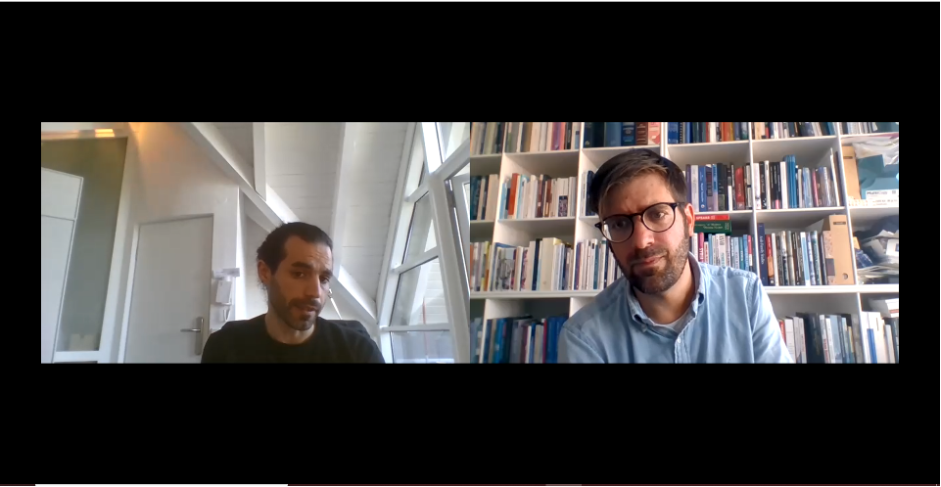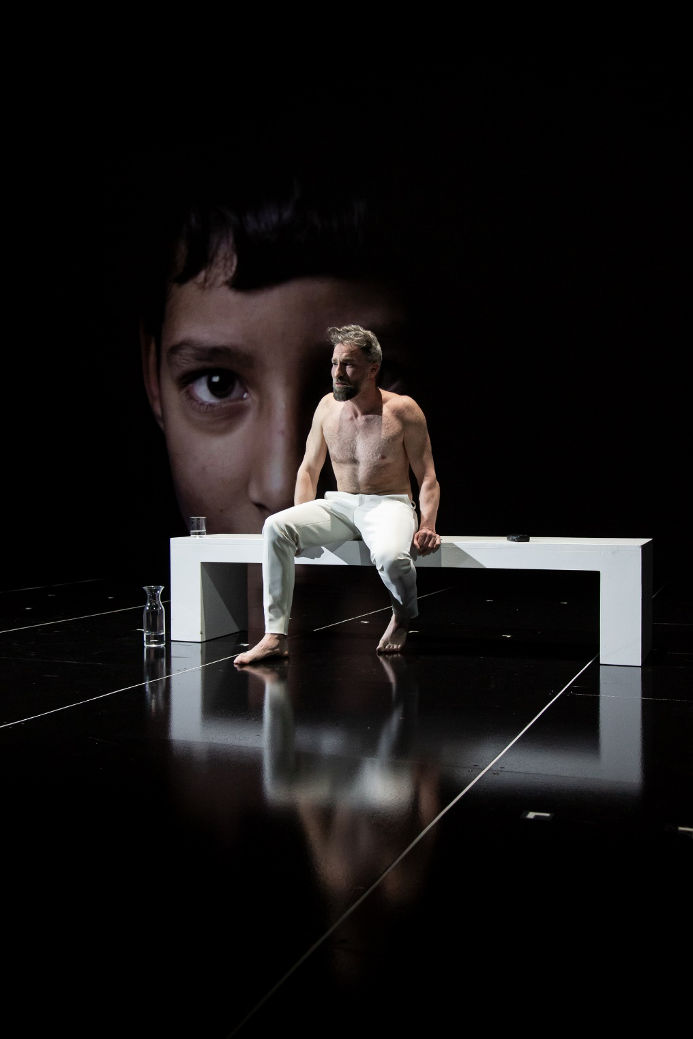Latency
Andreas Bandak
One pertinent feature of vertigo is that it tends not merely to cause disorientation but also a freezing and arrest of movement. In such arrested movement, one prevalent element is the slowing down of one’s reactions. This is what we face as the experience of latency. Latency can be defined as the delay in response time, or the lag in the transport of data in communication networks.
Where latency has such a technical backdrop, we can also productively engage with it as an important social phenomenon. Latency obviously relates to a form of waiting, or more precisely the duration a request is waiting to be handled. While waiting indeed is a ubiquitous social experience, which all social actors inadvertently find themselves in at various points in their lives (see also Janeja and Bandak, 2018), latency may afford us significant insights into the consequences of delayed and deferred actions. In other words, what is the interplay between latency and the vertiginous?
As illustrated in the introduction to this collection, the vertiginous frequently entails a sense of captivity, of unwanted locations and stalled time. Latency may here present as one significant variation of the vertiginous, often affectively charged. We may, for example, feel the need to delay a response to an unpleasant email. Certain forms of latency, however, may arise out of conditions which prime a loss of direction and any sense of control. Deprived of sleep, one usually will respond more slowly to external inputs, and correspondingly impulses may be harder to respond to.
We can also think of latent as opposed to manifest forms of fears and anxieties (Bandak, 2015). We may on a general level be nervous with regards to heights, however, actually standing on a precipice is an altogether different position. Here the situation does not need elucidation; at the precipice the fear is materialised as only too real. What is significant is that even after having left such a context, its after-effects may still linger. The actual fear and anxiety may translate into a generalised form of latency. When a general climate is marked by latency, actions and thought are slowed down, and slowing down rebounds from an inability to foresee what is arising. Latency here may translate into not just delayed or deferred actions but altogether inability to act and respond. Such latency hence may cause one to feel that social reality does not correspond to any previous knowledge.
*****
In the late summer of 2021, I have a zoom chat with the ingenious Berlin-based Syrian playwright Mohammad al-Attar. We are talking about the situation for Syrians in exile and artistic expression. One of the questions I ask al-Attar goes back to a public conversation he had with Alma Salem, Lina Sinjab, and organiser Lisa Wedeen earlier that year for Jadaliyya, entitled Syria Ten Years On: Art, Journalism and the Struggle over Narrative. Among the many insightful contributions, al-Attar stated: ‘The biggest problem for us Syrians is that we haven’t slept in ten years!’ He continued eloquently by saying: ‘I dance every day with depression but I don’t want depression to become a life companion…’
In our chat, I return to these lines, asking what al-Attar finds their implication to be. ‘It is a consequence of living with what happened, and what is still happening today in Syria’. Arriving in Berlin, al-Attar started to experience severe insomnia, in his explanation caused by the departure not from Damascus to Beirut but from the region. In al-Attar’s depiction, we are witnessing a cycle, which has come to an end. Uprising, popular mobilisation, documentation, defeat, and now reflection. As such, the changing tempo and temporalities of the Syrian situation now surfaces as an aftermath. A latency leaving one deprived of sleep.

Image 1: Mohammad al-Attar and Andreas Bandak in conversation on zoom in the late summer of 2021. Screen dump from video recording. Credit: Andreas Bandak.
What to make of this? To be deprived of sleep is surely productive of a particular modality of latency. Namely, the general delay of reactions and response time. The terror faced during the defeated uprising, the loss of kin, family and friends, is not given any escape at night, where dreams are equally haunting. The modularity of dreams and waking hours do not yield any respite. One is awake during dreams at night, and sleeping while awake. If any grip is to be found here, it is easily the creeping hold of unreality. No escape, no exit, no entry, neither in one’s waking hours nor during the night’s supposed rest.
*****
Literary theorist Hans Ulrich Gumbrecht reflects intensively on what characterises our present condition in works such as Our Broad Present (2014) and After 1945 (2013). One of his key notions is latency, which Gumbrecht describes as a general state of affairs after the world wars (2013: 24). What characterises latency in Gumbrecht’s reading, is a profound lack of mobility. Or, in his wording (2013: 68): ‘Being unable to move, inside or out, makes obsolete all narratives that presuppose or posit a necessary relation between time and transformation’. In such a situation, no move towards a solution is possible. One is merely left at a standstill with no progress, and no translation between space and time. Time is simply frozen, or perhaps rather time is freezing over. Such a condition is to be analysed not in search of meaning, but an overarching affective mood, or Stimmung, in the works of Gumbrecht (cf. 2012: 3). Such Stimmungen (2013: 24): ‘emerge as effects of latent conditions, but they do not necessarily originate with them’.
The particular post-war experience translates into a general feeling of there being neither an entry nor an exit. The mood is accordingly one where reflections seem to be reactive more than agentive. On Gumbrecht’s reading, the post-war years are haunted by claustrophobic scenarios, which ‘engender[s] an unbearable atmosphere’ (2013: 49). It is more precisely the feeling of history gone awry, that there is no means to re-enter or re-access it, that it is a bygone moment, which is marking this period. A feeling that history itself has moved on and left one behind only to look back upon wasted chances. Indeed, such a climate nests the feeling that (2013: 70): ‘[t]he future has become a future of the past’. For Gumbrecht, we are dealing with an altogether new and ‘unnamed chronotope’ (2014: 73), a broadening of our present leaving it difficult to picture any otherwise.
*****
In the face of such a broadening present, we may insist, as does Mohammad al-Attar, that we turn latency into a space of pensiveness. Turning latency into a space of pensiveness demands assiduous work and reflection as what happened will never be undone. However, such reflection on the end and endings of the Syrian revolution (Haugbolle and Bandak, 2017) surely could be one way to preserve the possibility to think also amidst ruin and tragedy. Here al-Attar in his public open and honest reflections and personal conversations keeps open the narrative of what took place, and what still takes place in parts of Syria. But further to this, al-Attar in his plays and artistic work keeps reflecting of what will be.
In his recent play Damascus 2045, al-Attar reflects on the time of the Syrian revolution as seen in the future. A nightmare starts the play, and nightmares figure prominently as the key problematic for grown-up Syrians, who were children during the war. With an epidemic of nightmares on the loose, insomnia is likewise a condition. Further to this, there is rise in suicide incidents. The main characters Sam and Sara are trying to piece together their lives as the Syrian system deliberately has altered or erased their memories. These lacunae of knowledge cause visceral discomfort to Syrian bodies with reactions slowed down. The whole society seems unable to cope with the past. Al-Attar ends the play with Sam and Sara talking with each other on there being a possible future for them. Sara has come to learn that she is the daughter not of a war hero but of a war criminal, and Sam how his family was killed by regime forces. Sara asks if they would be able to live together without entering the forgetting game. Sam replies: ‘We can give it a try…’.

Image 2: Damascus 2045 by Mohammad Al Attar, Theater Freiburg, Directed by Omar Abusaada. Credit: Laura Nickel.
References
Bandak A (2015) Reckoning with the Inevitable: Death and Dying among Syrian Christians during the Uprisings, Ethnos 80(5): 671-691.
Gumbrecht HU (2012) Atmosphere, Mood, Stimmung: On the Hidden Potential of Literature. Stanford: Stanford University Press.
Gumbrecht HU (2013) After 1945. Latency as Origin of the Present. Stanford: Stanford University Press.
Gumbrecht HU (2014) Our Broad Present: Time and Contemporary Culture. Stanford: Stanford University Press.
Haugbolle S and Bandak A (2017) The Ends of Revolution: Rethinking Ideology and Time in the Arab Uprisings. Middle East Critique 26(3): 191-204.
Janeja MK and Bandak A (2018) Ethnographies of Waiting: Doubt, Hope and Uncertainty. London: Bloomsbury.
About the author(s)
Andreas Bandak is an associate professor in the Department for Cross-Cultural and Regional Studies, University of Copenhagen. Specialised in anthropological studies of Syria, Christianity, and temporality, Bandak has studied the situation leading up to the uprising in 2011 as well as the wider situation in the Levant following in the wake of the violent and protracted civil war. His first monograph, Exemplary Life: Modeling Sainthood in Christian Syria is coming out in 2022 with University of Toronto Press. Bandak has also edited several volumes and special issues, including The Ends of Revolution (Middle East Critique, 2017), Ethnographies of Waiting (Bloomsbury, 2018), and Different Repetitions (History and Anthropology, 2019). Currently, Bandak is PI on numerous collective research projects engaging the question of futures and futurity among Syrians in Denmark, Lebanon and Jordan (bandak@hum.ku.dk).